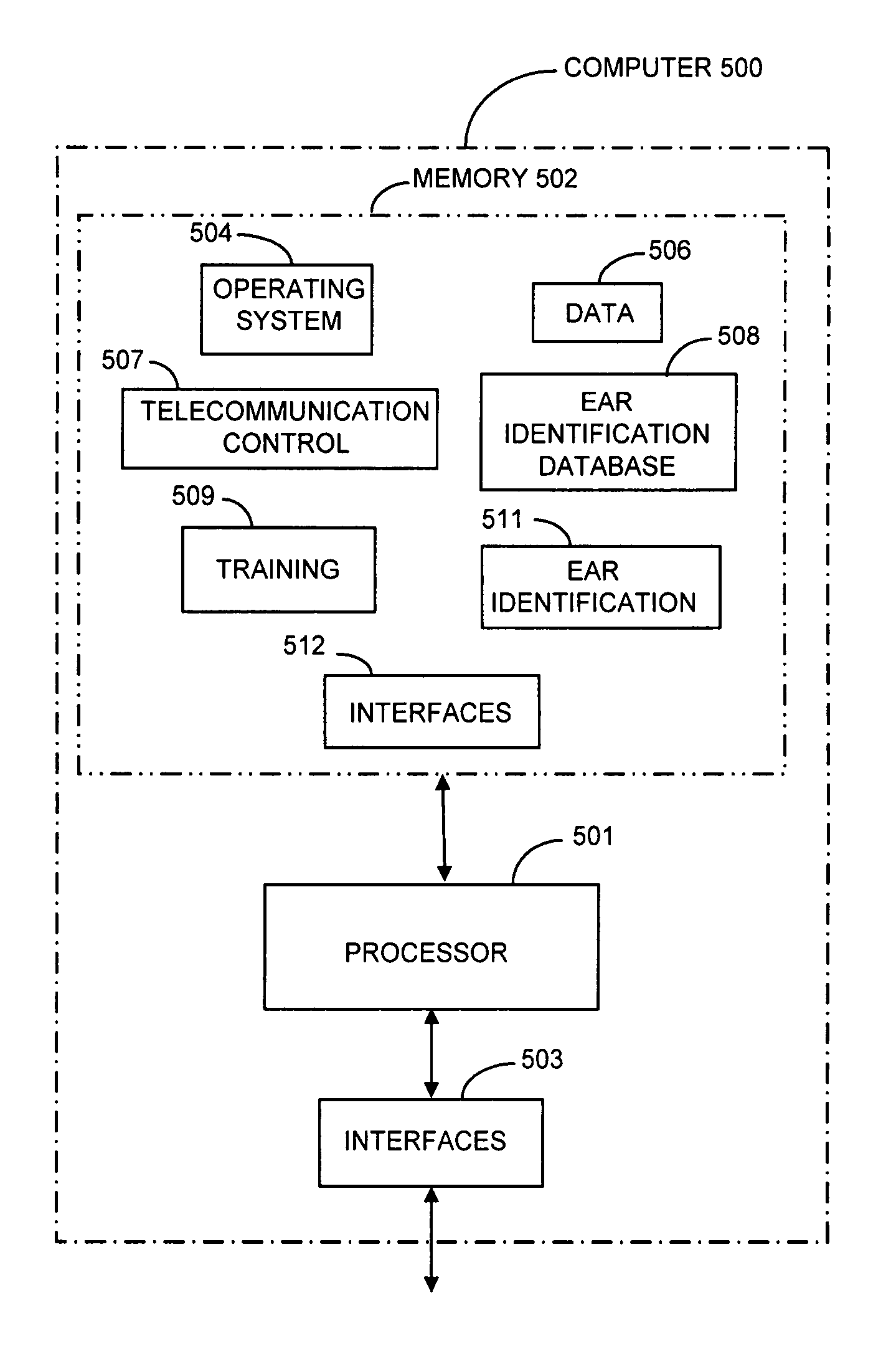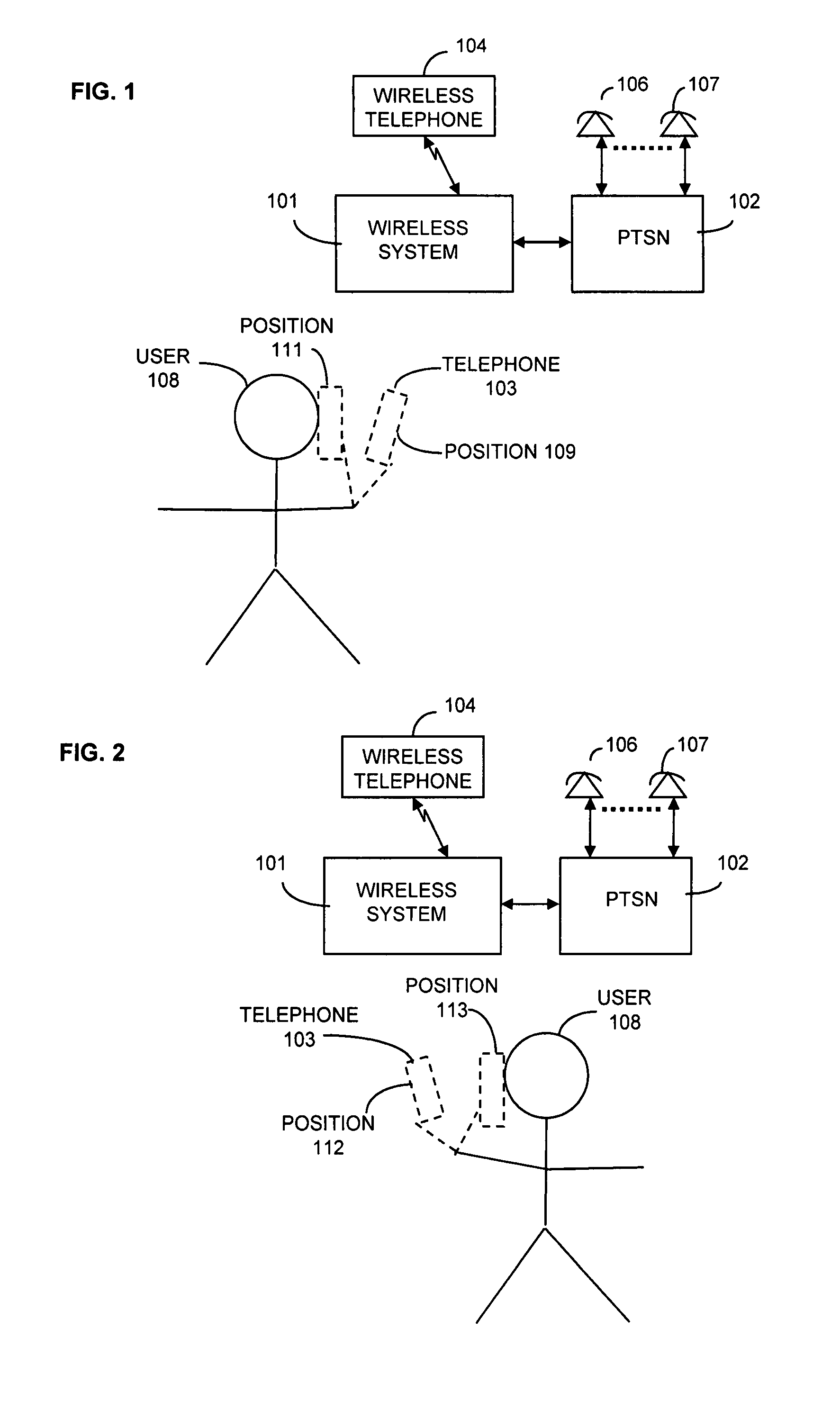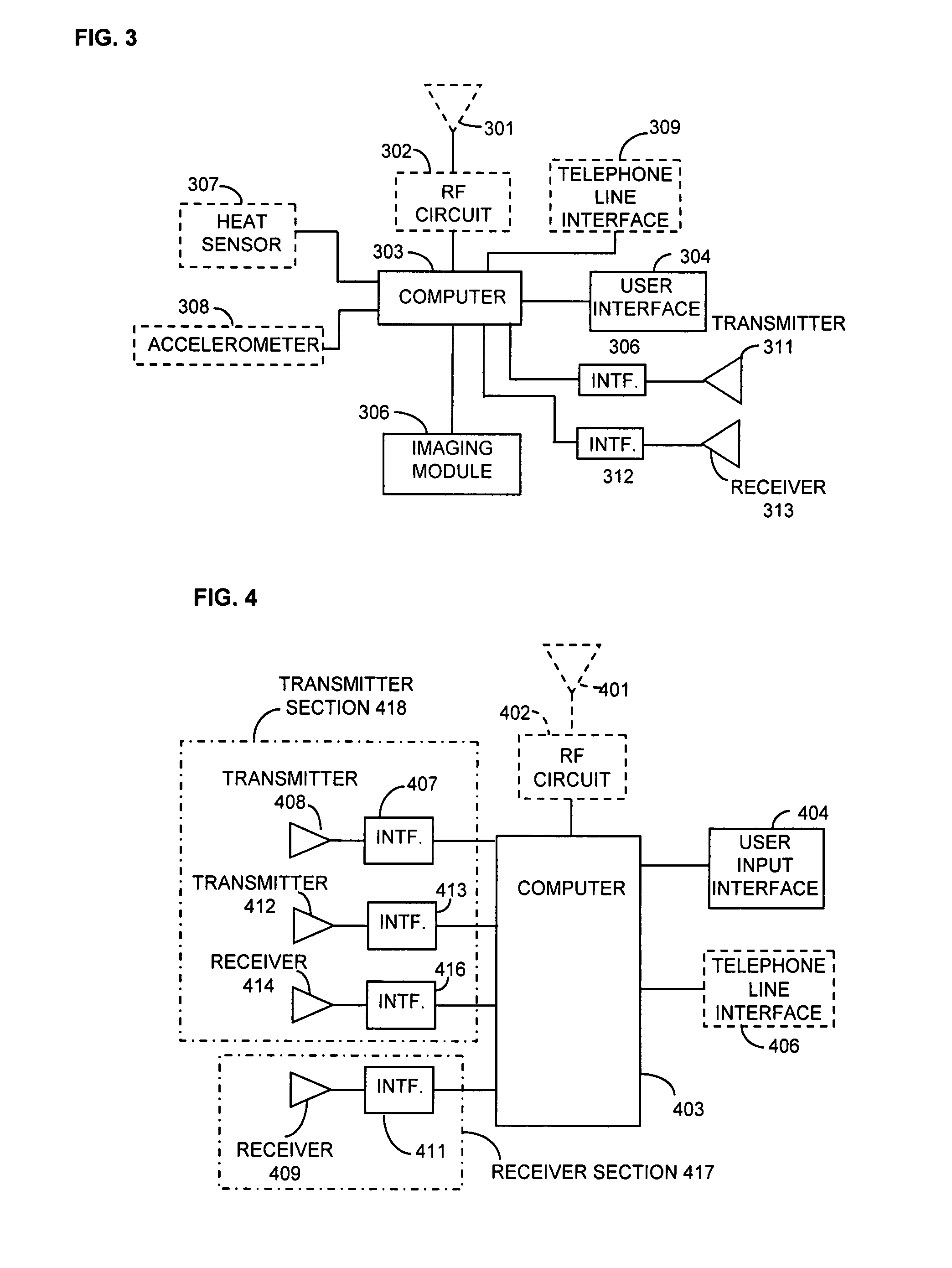Method and apparatus for configuring a handheld audio device using ear biometrics
a biometric and handheld audio technology, applied in the field of telephone configuration, can solve the problems of telephone having to constantly adjust, hearing impairment,
- Summary
- Abstract
- Description
- Claims
- Application Information
AI Technical Summary
Benefits of technology
Problems solved by technology
Method used
Image
Examples
Embodiment Construction
[0015]An embodiment uses ear biometrics to identify an ear of an individual being utilized for the telephone conversation, and then utilizes a pre-existing description of that ear's sensory characteristics and deficiencies to adjust the acoustics and / or electromagnetic properties of the telephone to meet the hearing requirements of the ear. These requirements may be audio volume and / or spectral deficiencies. The embodiment may utilize visual or sonic techniques for the identification, or it may use a combination of these. The telephone may be a wired telephone or a wireless telephone such as a mobile telephone, cellular telephone; a cordless telephone, two-way radio, personal digital assistant (PDA), or any handheld audio device. In addition, the telephone is capable of using various media such as, but not limited, to video and audio. The wired telephone may be connected to the Public Switched Telephone Network (PSTN) or a private telephone exchange by a physical wire or may utilize...
PUM
 Login to View More
Login to View More Abstract
Description
Claims
Application Information
 Login to View More
Login to View More - R&D
- Intellectual Property
- Life Sciences
- Materials
- Tech Scout
- Unparalleled Data Quality
- Higher Quality Content
- 60% Fewer Hallucinations
Browse by: Latest US Patents, China's latest patents, Technical Efficacy Thesaurus, Application Domain, Technology Topic, Popular Technical Reports.
© 2025 PatSnap. All rights reserved.Legal|Privacy policy|Modern Slavery Act Transparency Statement|Sitemap|About US| Contact US: help@patsnap.com



